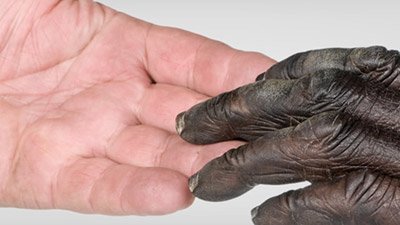Turtles Still Baffle Evolutionists
News to Know
Turtles in search of their long lost ancestor discover genes trump holes in the head.
News Source
Evolutionary paleontologists and biologists have always found turtles confusing. Turtles are reptiles, but a confusing array of anatomical and fossil data has left them in a clade by themselves. (A clade is a group of organisms thought to be descended from a common ancestor.) Now geneticists are suggesting a molecular tie-breaker.
Members of the diapsid clade are defined by the presence of two large temporal holes in each side of the skull. Crocodiles, lizards, snakes, and dinosaurs qualify for membership on this basis. Birds have gained membership even though they have the wrong kind of skull because evolutionists have decided they descended along the reptile evolutionary branch.
The shell is not the turtles’ only evolutionary puzzle.
The shell is not the turtles’ only evolutionary puzzle. Lacking temporal skull holes, turtles don’t seem to fit into the diapsid clade. Turtle fossils are dated by evolutionary paleontologists to the Triassic period 230 million years ago, and fossilized turtles look just like today’s turtles. Thus far, there is no fossil evidence to gain the turtle diapsid membership. To account for this discrepancy, evolutionists have presumed a common reptile ancestor predated even the diapsids. [UPDATE: In 2014, scientists found that Eunotosaurus, which seems to be an extinct variety of turtle, has two of these holes, though one is covered by a bone. In 2015 another variety of extinct turtle, Pappochelys, was found to have a diapsid skull. These discoveries highlight the biodiversity within the created kinds of turtles.]
But turtles may be the next group to get unambiguously promoted to diapsid after all and even linked to lizard cousins. Previous genetic studies have suggested turtles were diapsids though they lacked temporal holes. A new genetic study reported in Biology Letters offers “unambiguous evidence” based on microRNA, according to molecular paleobiologist Kevin Peterson.
MicroRNA molecules are not involved in protein production but instead regulate the expression of many genes. Genes which appear to be common to different organisms can be regulated by specific microRNA molecules, resulting in major morphological differences. Evolutionists believe that new microRNA molecules can evolve over millions of years, and they maintain that “once established in a clade they are rarely lost.”
The latest work found that “turtles and lizards share four unique miRNA gene families that are not found in any other organisms' genome.”1 Thus researchers are now confident that turtles and lizards are closely related and that their common ancestor lost its temporal holes during millions of years of evolution.
As the Common Designer of all things, God created the various kinds of organisms during the creation week, each fully functional and mature. Many creationists believe there were at least two created kinds of turtles, and over the past 6000 years “turtle populations have lost genetic information through natural selection and mutations, so the turtles preserved by the Flood—and those we find today—are more diverse than the original created turtles, and may well be missing some features.”2 Furthermore, as the Common Designer, God could utilize bits of regulatory genes in more than one kind of creature without having those creatures share a common ancestor.
Incidentally, while microRNA is being used in this instance to support the notion of a common ancestor, we’d like to point out the enormous differences in the microRNA found in chimps and humans. A 2006 study of human and chimpanzee brains discovered 51 microRNA molecules unique to humans and 25 unique to chimps,3 yet one more reminder of the differences Christ our Creator (Colossians 1:16) built into the unique biological designs of humans and chimps.
Further Reading
- Get Answers: Genetics
- Is “Grandfather Turtle” the Transitional Form that Puts Creationist Claims to Rest?
For More Information: Get Answers
Remember, if you see a news story that might merit some attention, let us know about it! (Note: if the story originates from the Associated Press, FOX News, MSNBC, the New York Times, or another major national media outlet, we will most likely have already heard about it.) And thanks to all of our readers who have submitted great news tips to us. If you didn’t catch all the latest News to Know, why not take a look to see what you’ve missed?
(Please note that links will take you directly to the source. Answers in Genesis is not responsible for content on the websites to which we refer. For more information, please see our Privacy Policy.)
Footnotes
- T. R. Lyson, E. A. Sperling, A. M. Heimberg, J. A. Gauthier, B. L. King, K. J. Peterson, “MicroRNAs Support a Turtle + Lizard Clade,” Biology Letters, The Royal Society Publishing, July 20, 2011, rsbl.RoyalSocietyPublishing.org/content/early/2011/07/08/rsbl.2011.0477.
- “A Sea of Change for Turtle Origin Theories,” Answers in Genesis, December 6, 2008, https://answersingenesis.org/missing-links/sea-change-turtle-origin-theories/.
- J. Lightner, “A Tale of Two Chromosomes,” Answers in Genesis, November 14, 2007, https://answersingenesis.org/genetics/dna-similarities/a-tale-of-two-chromosomes/.
Recommended Resources

Answers in Genesis is an apologetics ministry, dedicated to helping Christians defend their faith and proclaim the good news of Jesus Christ.
- Customer Service 800.778.3390
- © 2024 Answers in Genesis





